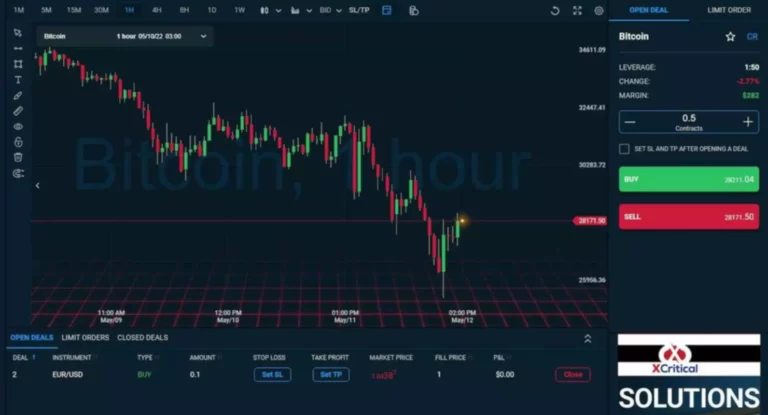The winner appends the following block to the chain and claims new bitcoins within the form of the block reward. Ethereum uses 113 terawatt-hours per year—as a lot power as the Netherlands, according to Digiconomist. A single Ethereum transaction can eat as a lot energy as a mean US family uses in additional than a week.

They could then use their own attestations to make sure their most well-liked fork was the one with probably the most amassed attestations. The ‘weight’ of accumulated attestations is what consensus shoppers use to find out the proper chain, so this attacker would be ready to make their fork the canonical one. However, a power of proof-of-stake over proof-of-work is that the community has flexibility in mounting a counter-attack.
Block Proposals And Validation
Proof of Stake (PoS) is a consensus mechanism used in blockchain networks to achieve distributed consensus and safe transactions with out counting on energy-intensive mining processes. Unlike PoW, which requires miners to resolve complicated mathematical puzzles to validate transactions and create new blocks, PoS selects validators primarily based on the amount of cryptocurrency they hold and are keen to “stake” as collateral. One validator is randomly chosen in each slot to be the block proposer. Their consensus client requests a bundle of transactions as an ‘execution payload’ from their paired execution client. They wrap this in consensus information to type a block, which they ship to other nodes on the Ethereum community.
PoS brings several advantages that align properly with the ideas and functionalities of DeFi. In this weblog publish, we are going to elaborate on Ethereum’s transition to PoS & its broader implications for the DeFi area. It will begin with the Bellatrix improve on the Beacon Chain, and a few week or so later, the merge will likely activate Sept. 15.
Proof-of-work and proof-of-stake alone usually are not consensus protocols, but they’re often referred to as such for simplicity. They are actually Sybil resistance mechanisms and block author selectors; they are a way to decide who is the creator of the most recent block. Another necessary component is the chain choice (aka fork choice) algorithm that enables nodes to pick one single correct block at the head of the chain in scenarios the place multiple blocks exist in the same position. If they pull off the proof of stake fork smoothly and the transaction prices collapse, then it seems bleak for all the other “Ethereum killer” chains, in the same way as bitcoin money (BCH) and bitcoin SB (BSV) merely don’t have any hope in changing bitcoin. Over time most of these blockchains will likely wither away, unless they will add some new particular sauce to their providing to offer them unique and potent performance. In the old world of pc software program, database firms come and go and this would be the destiny of many of the smart contract platforms.
Proof Of Labor Vs Proof Of Stake
Validators attest to the validity of the proposed block by providing their digital signatures. This consensus verification process entails confirming that the block has been proposed by a sound validator and that the proposed block follows the consensus rules. They verify that every transaction has a sound https://www.xcritical.in/ signature, the sender has enough funds, and doesn’t violate predefined circumstances or good contract rules. Validators also interact in attestation, which entails attesting to the validity of proposed blocks.
The term ‘consensus mechanism’ is usually used colloquially to discuss with ‘proof-of-stake’, ‘proof-of-work’ or ‘proof-of-authority’ protocols. However, these are simply parts in consensus mechanisms that protect towards Sybil assaults. Consensus mechanisms are the whole stack of ideas, protocols and incentives that enable a distributed set of nodes to agree on the state of a blockchain. The menace of a 51% attack(opens in a model new tab) nonetheless exists on proof-of-stake as it does on proof-of-work, nevertheless it’s even riskier for the attackers.
- Double-signing occurs when a validator indicators conflicting blocks, undermining the consensus mechanism.
- PoA requires participants to resolve a cryptographic puzzle as proof of work and then stake their coins as proof of stake.
- Committees divide up the validator set so that every active validator attests in each epoch, but not in every slot.
- Ethereum employs a number of slashing situations that validators must adhere to.
- Unlike PoW, which requires miners to solve complicated mathematical puzzles to validate transactions and create new blocks, PoS selects validators primarily based on the amount of cryptocurrency they hold and are willing to “stake” as collateral.
- They take turns proposing blocks and together with validated transactions in those blocks.
Some neighborhood members had been so upset they stored mining the original chain, leading to two Ethereums—Ethereum Classic and what we have right now. If it occurs once more, the success (and mining power) behind any competing version of Ethereum will depend upon the value of its coin in the open markets. After the blockchains merge, Ethereum will introduce sharding, a way of breaking down the one Ethereum blockchain into sixty four separate chains, which can all be coordinated by the Beacon Chain. An algorithm selects from a pool of validators primarily based on the amount of funds they’ve locked up. The more you stake, the higher your likelihood of “winning the lottery.” If you’re chosen and your block is accepted by a committee of “attestors”—a group of validators randomly chosen by an algorithm—you are awarded newly minted ether.
These advantages embody enhanced energy efficiency, improved safety through economic incentives, higher scalability, and a reduced environmental footprint. Validators must switch their ETH into the Ethereum 2.zero deposit contract, locking it up as collateral for the staking process. By doing so, validators sign their commitment to securing the community and participating in consensus. Validators must set up a devoted validator node, which entails operating Ethereum consumer software program similar to Prysm, Lighthouse, or Teku. The node performs varied tasks, together with block validation, transaction verification, and consensus participation. Validators execute the transactions within the proposed block to validate the resulting state transition.
What’s Ethereum Proof Of Stake (pos)? In-depth Guide
This all means a coordinated assault would be very expensive for the attacker. Better throughput, scalability, and increased efficiency will enable the network to attract and support extra customers whereas safeguarding the security of their property. Also, with Ethereum’s continued evolution, the upgrade lays the groundwork for future innovations, given the ever-changing calls for of the blockchain arena. Ethereum’s Dencun upgrade is about to have an enormous potential impact on validators.

When a validator is suspected of violating the slashing situations, the protocol initiates a slashing process. This course of entails gathering proof of the misbehavior and presenting it to other validators for verification. The protocol enforces the slashing penalty if the proof is deemed valid, decreasing the validator’s stake proportionally.
Omg Network
Proof-of-Work (POW) makes use of a aggressive validation methodology to substantiate transactions and add new blocks to the blockchain. Ultimately, the desire for PoS or PoW is dependent upon a blockchain network’s specific objectives and priorities. Ethereum’s shift to PoS addresses scalability and power concerns, nevertheless it’s crucial to consider trade-offs and ongoing analysis in consensus mechanisms. It improves scalability, permitting for sooner transaction affirmation times and elevated network capacity, which is crucial for the environment friendly operation of DeFi applications. Additionally, PoS introduces new opportunities for validators to earn rewards by way of staking, contributing to the general growth and participation within the DeFi ecosystem.
Within each epoch, there are checkpoints, which are predetermined time limits when the state of the blockchain is considered finalized. Validators earn staking rewards for their energetic involvement in the consensus process. These rewards are distributed as newly minted ETH and are proportional to the validator’s stake. The precise reward construction and annual share yield (APY) can range relying on network parameters, supply and demand dynamics, and different components. The Ethereum community employs a semi-random choice course of referred to as the RANDAO to discover out which validators get to propose and attest to blocks. They take turns proposing blocks and together with validated transactions in these blocks.
Ethereum employs a number of slashing conditions that validators should adhere to. These situations typically involve actions that hurt the community’s security, corresponding to double-signing or being offline for an prolonged interval. Double-signing happens when a validator indicators conflicting blocks, undermining the consensus mechanism. Being offline or not collaborating in block validation additionally disrupts the community’s easy operation. Validators are incentivized to maintain excessive availability and integrity to keep away from penalties. Ethereum validators play an important role in securing the network and sustaining its consensus by way of the method of staking.
The Ethereum upgrade will bear additional testing on the third and ultimate testnet, Holesin, within the first week of February. The highly-anticipated Ethereum Cancun upgrade is ready to go stay in Q1 of 2024, though no clear date has been mentioned. Earlier plans had the launch date set for October 2023, but the improve was pushed forward as a end result of engineering complexities. Erika Rasure is globally-recognized as a quantity one shopper economics subject material expert, researcher, and educator. She is a financial therapist and transformational coach, with a special curiosity in serving to ladies learn how to make investments. The transition from PoW to PoS in Ethereum has profoundly impacted the DeFi ecosystem.

The Ethereum network has undergone several upgrades over the years to maximise its capability. Recently, builders have been keen to provide an efficient answer to the twin challenges of excessive fuel fees and transactions throughout. Sign up to obtain e-mail notifications for protocol-related announcements, similar to network upgrades, FAQs or security points.
Latest Blogs
- Slot Gacor: Rahasia Menangkan Permainan Slot Online
- Slot Gacor: Panduan Lengkap untuk Menang Besar di Mesin Slot
- Slot Gacor: Panduan Lengkap untuk Menang Lebih Banyak di Game Slot Online
- Slot 10K Terbaik dan Terpercaya Tahun Ini: Gampang Menang Besar Terbaru
- Scatter Hitam Terbaik dan Terpercaya Tahun Ini: Gampang Menang Besar Terbaru
- Situs Slot Hari Ini Terbaik dan Terpercaya Tahun Ini: Gampang Menang Besar!
- Mahjong Ways 2: Strategi Ampuh untuk Pemain Pemula
- Permainan Slot777 yang Memiliki RTP Tertinggi
- Bezpieczne Zakłady i Ekscytujące Wygrane w Urodzinowy Vavada Bez wpłacania: Najlepsze Miejsce dla Miłośników Hazardu!
- test 1